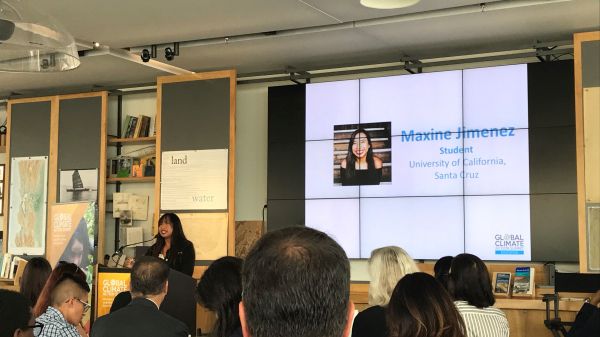Headline of the Future: “Green Wave Rolls Through K-12 Education”

On September 12, 2018, attendees of the Global Climate Action Summit affiliate event, “Education: Key to Long-Term Climate Action Success”, were asked to create news headlines for the year 2030:
- “Classrooms save the world – A statewide walkout for climate action”
- “Intergenerational climate activists scale global lessons learned and save humanity”
- “Last of 50 states adopts fully-funded place-based environmental education programming”
- “95% of Americans think climate change is real and are actively engaged in doing something about it”
These are just some of the inspiring headlines which were brainstormed by teachers, district leaders, nonprofit organizations, informal education leaders, and youth activists who attended this event at the San Francisco Exploratorium from California and across the world. With the recent release of the Intergovernmental Panel on Climate Change’s (IPCC) report calling for urgent action by 2030, achieving these lofty goals are even more relevant.
This event was co-organized by the California Environmental Protection Agency (CalEPA), Ten Strands, CalRecycle and featured speakers from the Leonardo DiCaprio Foundation, TreePeople, and included a very special performance from youth poet, Leila Mottley from the Oakland School for the Arts.
Event speakers focused on the importance of educating youth about climate change and recognizing the crucial role youth can play in designing and implementing climate solutions.
They tackled three major questions:
- How can we provide young people a seat at the table and empower all California students?
- How can we scale education efforts to achieve global climate action goals?
- What cross-sector partnerships can we create to elevate the role of education in climate action?
Maxine Jimenez, youth activist and one of the keynote speakers, reminded the adults in the room to recognize when to step aside to let young people lead climate solutions. To read Maxine’s message to adult educators and education leaders about promoting equity and socio-environmental justice in the education system, see her recent blog for the California Science Teacher’s Association.
One of the main goals of the overarching Global Climate Action Summit, led by California Governor Jerry Brown, was to emphasize action. Leaders at every level, and in every sector, were encouraged to make bold commitments to “take ambition to the next level.”
Likewise, attendees of the education event were asked to do the same: what can each of us, in our respective roles, commit to in order to drive climate education, community engagement, and workforce development?
SB 720, signed by Governor Jerry Brown on September 13, reinforced California's commitment to environmental literacy and added climate change to the list of environmental topics to be addressed by California’s Environmental Principles and Concepts (EP&C’s). The new policy declares environmental literacy as an important curriculum content area that provides rich learning opportunities for students and can help us foster solutions to the environmental problems we face.
We have a responsibility to ensure that young people are equipped with the knowledge and tools to create climate solutions. We also have a responsibility to create spaces for their voices to be heard.
Young people have shown us they can organize, speak for themselves, and rise up to the challenge. It is up to us to listen, help lift up their voices, and create opportunities for youth to be a part of the solutions. We need their help to realize the positive headlines in 2030 for which we hope.
If interested in learning more about the intersection of education and climate action, please visit the resources tab of the event website.
